Need a drink of water? In the early years of Omaha, that meant going to the bucket in the kitchen and pouring it into a cup. If your bucket was empty, you’d either have to go out to the well in the backyard and hoist a new bucket up, or go to the shared well. In the windy autumns, cold winters, hot summers, and rainy springs that filled up life in the Missouri River Valley, that got old really quick.

The Original Omaha Water Works
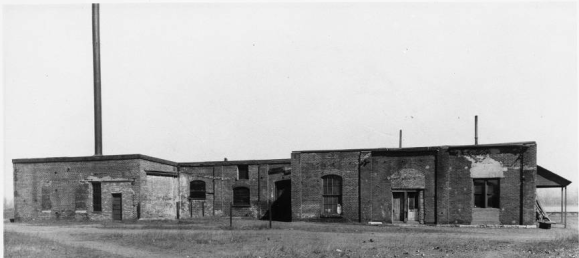
The Walnut Hill Reservoir was built as part of the original Omaha Water Works in 1882. Working with gravity, the reservoir drew water from Missouri River near downtown, bringing it uphill to N. 40th and Hamilton Streets. Within a decade of construction, that system was changed so that water was drawn from the Florence Water Works to Walnut Hill, and distributed from there.

Located immediately north of Mercer Park, the Walnut Hill Reservoir is bound by Hamilton Street and the Walnut Hill neighborhood on the west, North 38th Street on the east, Nicholas Street on the south, and Mercer Park Drive on the east. Walnut Hill is cut in half by the curvy Park Road, which extends from Mercer Boulevard and Lincoln Boulevard. “Walnut Hill Reservoir” is chiseled into a concrete panel between the steps at North 38th Street.

From its beginnings, the reservoir was seen as a huge asset to the city and for more than a century, the Reservoir was maintained as a beautiful park.
The City of Omaha treated the facility like a jewel, too. The original landscaping at Walnut Hill, including sidewalks, streets, trees, and flowers cost $10,000, which was an exorbitant amount of money in the 1880s. Arriving to the park’s entrance at N. 38th and Lafayette Streets, patrons were immediately greeted by a massive stone walkway, complete with stairs leading walkers to the top of the highest hill in Omaha.
The reservoir was surrounded by a wrought iron fence when it was originally built. Over the years, this fence became more predominant in the landscape of the park. Eventually there was a wrought iron gate installed just before the pumping station entrance.

Comprised of a large section of land, the Walnut Hill Pumping Station was the highlight of the facility. Built in front of three large basins, the station drew water uphill from the Missouri to be redistributed for the city’s needs. When it was originally built, it had two basins that held a combined total of 10,000,000 gallons of water. In 1913, that total was increased by 11,000,000 to meet the city’s growing needs.

Early on, the reservoirs were also used as sources of ice for peoples’ homes, too. F. L. Cotton operated a large ice company in Omaha, and his company cut and sold ice annually throughout the winter when Walnut Hill was frozen over.
A Poopy Debacle
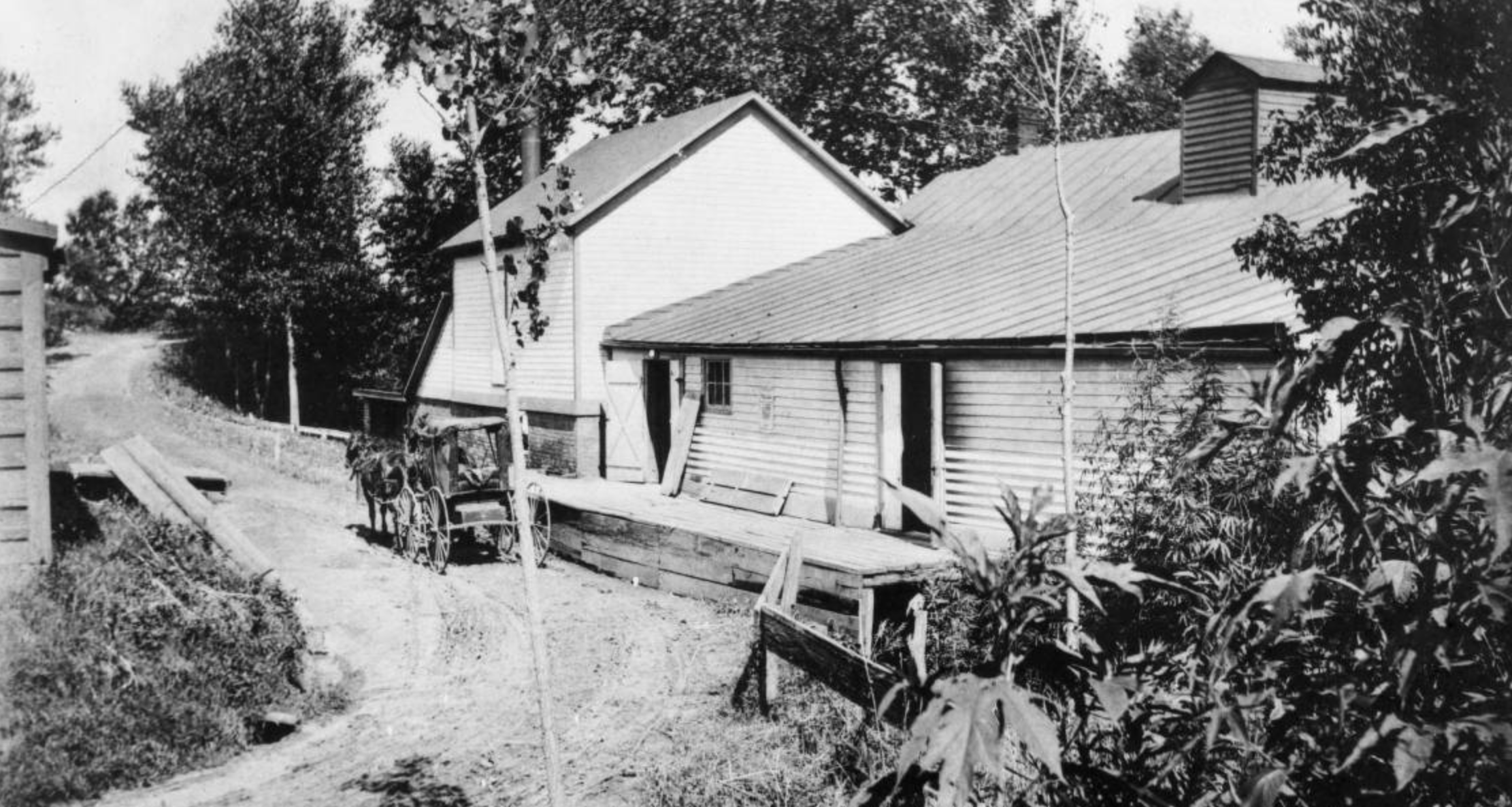
One day in 1909, a bunch of people in the middle of Omaha got sick. Very, very sick. After careful examination of their entire system, the City of Omaha discovered that the old Mill Creek north of Florence was the culprit.
Seems that a lot of sewage from the then-town of Florence drained into Mill Creek. This was the same creek that the old Florence Mill used. It was called old even in 1909 because it was built by the Mormons in 1845. At some point in the history of the town of Florence, city fathers piped its sewage into the creek just east of the mill. Further upstream, at least two dozen farms also emptied into the creek.
None of that load bode well for the new intake engine built on the Missouri River. Built proudly by the Florence Water Works, the gigantic engine was coincidentally built 500 feet south of the mouth of the Mill Creek. As a report afterwards said, “the contents of this creek undoubtably constitute a dangerous source of contamination for the water entering the Florence intake.”
Turns out that contamination got people really sick.

The water was filtered through the Florence Water Works by the Minne Lusa Pumping Station to the Walnut Hill Pumping Station. From Walnut Hill it was pumped out around central Omaha. In addition to the new engine at the Florence Water Works taking in raw sewage from Mill Creek, the previous year the water company also managed to reroute a city sewage outlet from the old Florence Lake, which was filled in 1909, to a new release eight miles north of Omaha. Additionally, the City of Council Bluffs was also piping raw sewage into the Missouri River north of the engine, too.
Really, really sick. When an epidemic of contamination sickness swept Omaha, the culprit was quickly discovered to be this new pumping engine, thoroughly filled with poop.
It took a mere month after the epidemic for Omaha’s water supply to be cleaned up. As part of the effort, Walnut Hill was fitted with cleaning devices to ensure the water there was clean.
Today, more than a century later, residents throughout the City of Omaha continue to benefit from the powerful, pretty Walnut Hill Reservoir. But some of that happened just because of this poopy debacle.

Boulevards Near the Reservoir
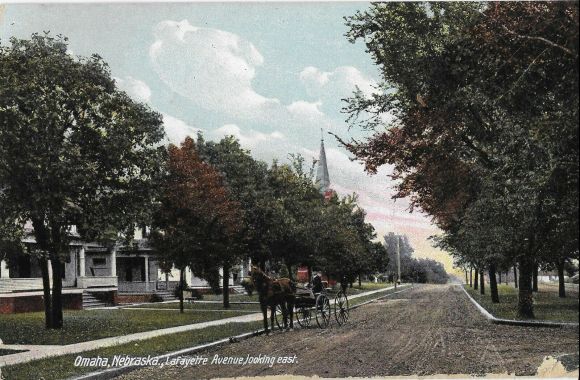
In 1912, the City of Omaha built a new park-like driveway starting at the reservoir. Dr. Sam Mercer had donated part of his estate to become a park in honor of his daughter, and the Mercer Park Boulevard connected to the Lincoln Boulevard, which swooped and swished to the Park Road, then led beyond to John A. Creighton Boulevard.
From Hamilton Street on the edge of the reservoir, Mercer Park Boulevard connected the reservoir with Bemis Park, to the immediate east past the old Methodist Hospital, currently the headquarters for Omaha’s Salvation Army. Then it continues flowing north to Lake Street along the former 37th Street, and winding east to Bedford Street, where it follows 32nd Street north to Sahler Street. It eventually connects with Fontenelle Boulevard, and is part of Omaha’s 125-year-old extravagantly beautiful boulevard system.
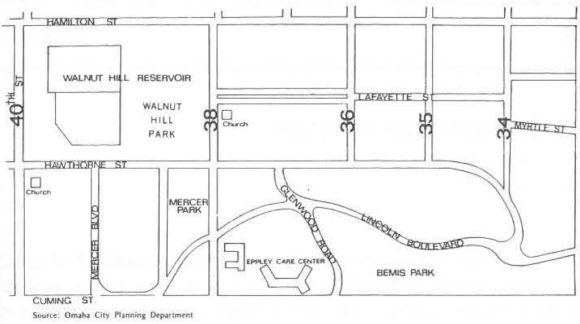
The New Fountain
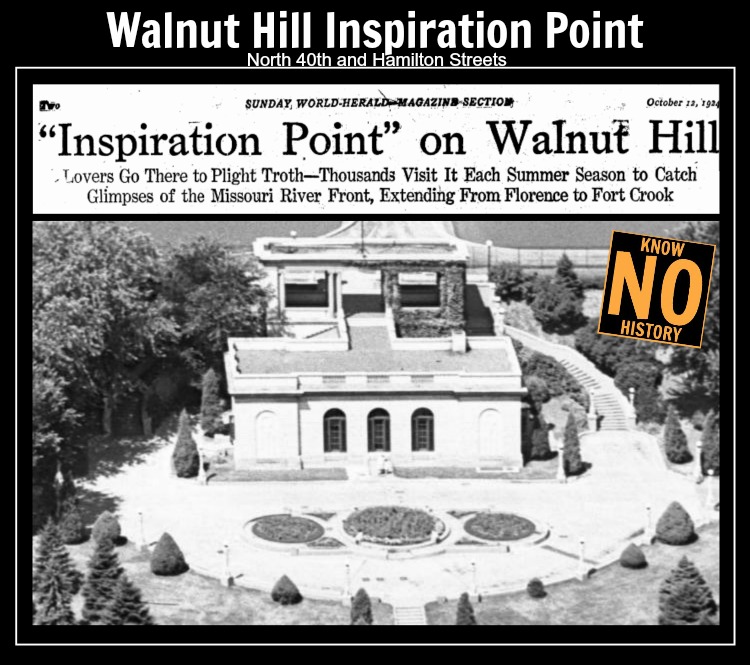
In 1915, a fire destroyed the Walnut Hill Pumping Station. The reservoir stood intake, but the engines that drew water from the Florence Water Works and pumped it throughout the area were destroyed. Also, the machines that shifted sewage from the area were severely damaged, too.
Within a year, they were all replaced. The new facility featured heavily in the appearance of the reservoir, too, as it now had massive concrete structure around it. The park-like setting was reconfigured at that point. A beautiful sidewalk was installed at N. 38th and Lafayette which led to two exquisite fountains, and a viewing platform. When it was built, this platform let people have a great view of the Missouri River Valley. Today that view is mostly crowded out by trees and tall buildings downtown.
In 1915, a large multi-colored fountain that was “brilliant at night” was installed. It was turned off at the beginning of World War II, and was never restored to use. The other fountain was restored in the 1990s and is shown above.

On March 27, 1964, a massive earthquake in Alaska damaged one of the basins at the Walnut Park Reservoir. The City of Omaha quickly repaired it, but its distance was remarkable.
A Neglected Wonder of North Omaha

In 1981, the Walnut Hill Reservoir was designated an American Water Landmark by a national association.
Although they’ve apparently sporadically tried differently throughout the years, the City of Omaha treats Walnut Hill Reservoir like the rest of North Omaha today and does a poor job of maintaining it. Despite the opulent homes of its neighbors that are well-maintained by well-to-do families and its location near the extravagant St. Cecelia’s Cathedral, the City still doesn’t regard it as highly as it does the spectacularly maintained parks in West Omaha.
For decades, Walnut Hill was included in tourist guides and lists of destinations in Omaha. That wasn’t because it was some kind of engineering wonder, either; instead, it was such a beautiful place with so many wonderful features that people really wanted others to see it.

In 1986, the City of Omaha Parks and Recreation Department was working with MUD to build a baseball diamond on the reservoir’s park grounds. The sanctitude and solace of the park was broken by this diamond. The reservoir was also surrounded by a 9 foot tall chain link fence at some point around then.
The Douglas County purchasing office approved a contract for improvements at the reservoir in 2011. However, I cannot find details about what happened.
Today, the stairs are crumbling and grass crowds the sidewalks. Trees are reaching over the pathways, and the beautiful flowers that used to abound are mostly gone now. No colored lights provide a spectacular show for visitors, and while the recently renovated fountain is pretty, it loses some luster with the absence of everything else.
You Might Like…
- A History of the Florence Water Works and Minne Lusa Pumping Station
- A History of North Omaha’s Walnut Hill neighborhood
- A History of the Intersection of North 40th and Hamilton Street
- A History of the Bemis Park Landmark Heritage District
Elsewhere Online
- OmaBabe’s pictures of the reservoir
- Gareth O. Peterson (July 1978) “Bemis Park: A study of neighborhood change,” University of Nebraska at Omaha Center for Applied Urban Research.
BONUS PICS!

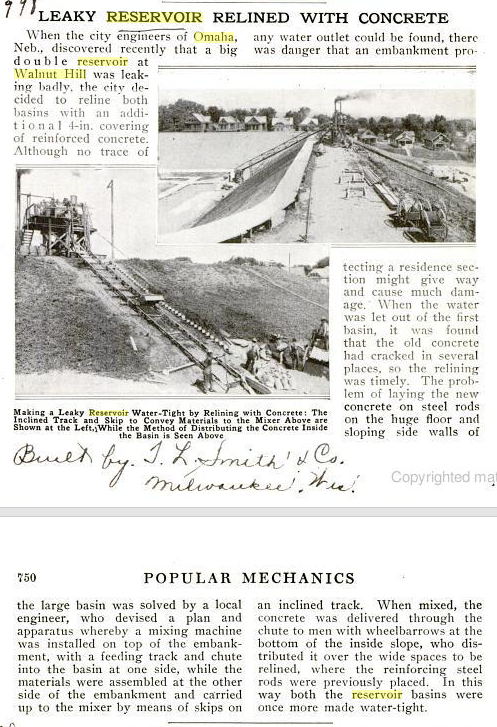



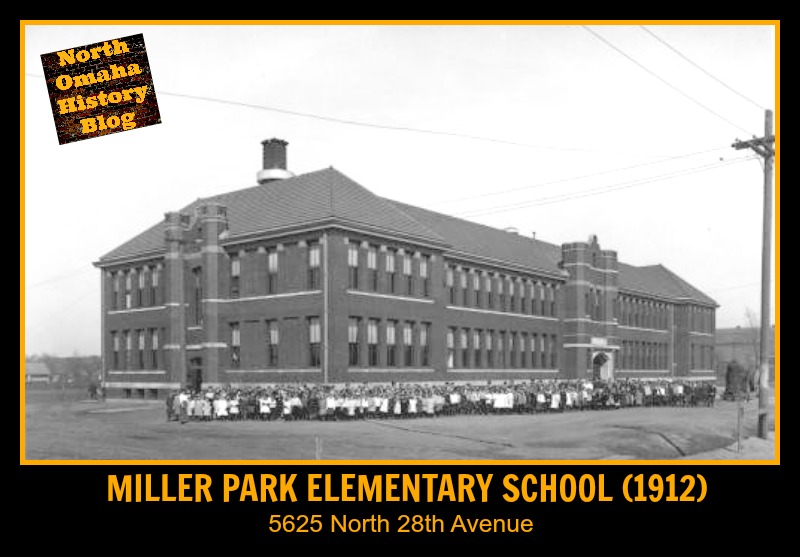



Leave a comment